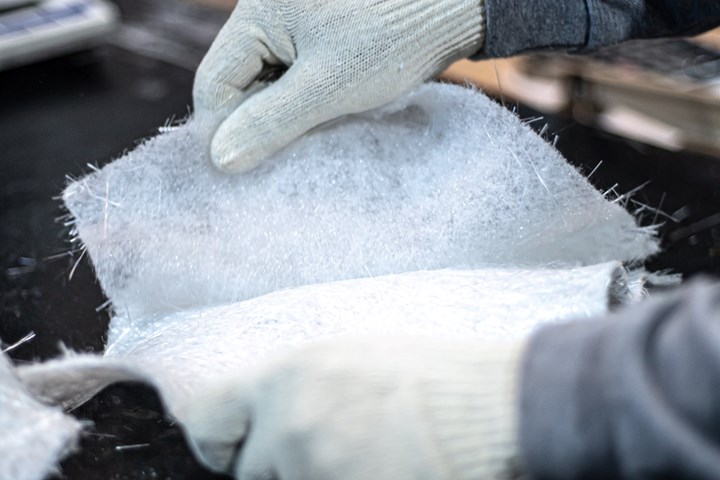Ilium Composites introduces ULTImat fire-resistant fiberglass
A fire-retardant structural core layered with fiberglass and an integrated surface veil meets fire safety standards for closed mold composite parts.
Ilium Composites (Hidd, Bahrain) has developed a fire-retardant fiberglass reinforcement as part of its ULTImat glass fiber range.
ULTImat FR is comprised of three distinctive materials across four layers. A bespoke proprietary fire-retardant structural core is sandwiched between two fiberglass layers and completed with an integrated surface veil that
Ilium Composites says creates an aesthetic surface finish without visible glass fibers on the gel coat. Available for all closed mold processes, ULTImat FR achieves fire safety standards in aesthetic composite surfaces.
“Our solution to fire-retardant closed mold composite parts is both lighter and more cost competitive than 100% glass core alternatives, made possible through our exclusive core technology,” Colin Leatham-Locke, business development manager at Ilium Composites says.
ULTImat FR meets the EN 45545 European Railways standard for fire safety, making it ideal for train components that need to meet these norms — such examples include train toilet modules. Further achieving ASTM 162/662 standards in surface flammability and smoke generation density, Ilium’s fire-retardant fiberglass reinforcement is applicable to many industries, including construction, where it can be applied as cladding and architectural facades.
ULTImat FR is available as standard in rolls of 1,270 mm wide. Each roll weighs between 80-90 kg. Non-standard lengths and widths can also be supplied.
Also see Ilium’s UTLImat chopped strand mat and industrial-grade Amplify surface veil offerings.
Related Content
-
Novel composite technology replaces welded joints in tubular structures
The Tree Composites TC-joint replaces traditional welding in jacket foundations for offshore wind turbine generator applications, advancing the world’s quest for fast, sustainable energy deployment.
-
ZEBRA project demonstrates closed-loop wind recycling system
Consortium partners have proven the complete recycling of thermoplastic wind turbines via two manufactured wind blades, featuring reduced operating cost, CO2 emissions.
-
Automotive chassis components lighten up with composites
Composite and hybrid components reduce mass, increase functionality on electric and conventional passenger vehicles.















.jpg;maxWidth=300;quality=90)

